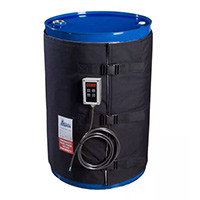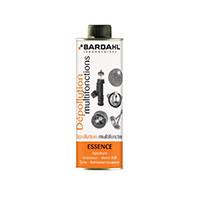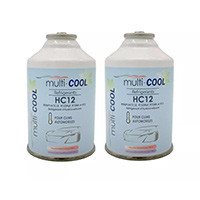
Photovoltaic energy: Investing for a sustainable and economical future
Photovoltaic energy has seen considerable growth in recent years, due to the growing awareness of the need to switch to renewable energy sources to combat climate change. Thanks to technological advances and government incentives, electricity generation from solar panels has become an increasingly accessible and cost-effective alternative. In this article, we will explore photovoltaic power generation in detail, presenting the basic concepts, tips for individuals and businesses, concrete examples, and a reflection on the benefits of solar energy to encourage people to invest in this sustainable technology.
Presentation of photovoltaic energy
Photovoltaic energy is a form of renewable energy that harnesses sunlight to produce electricity. Solar panels consist of photovoltaic cells, which are semiconductors that convert light into electricity through the photovoltaic effect. The solar panels are then connected to an inverter, which converts the direct current produced into alternating current that can be used in our homes and businesses.
Types of solar panels
There are three main types of solar panels, each with its advantages and disadvantages:
Monocrystalline solar panels: Composed of monocrystalline silicon cells, these panels offer high efficiency and long service life. Their cost is usually higher than that of other types of solar panels.
Polycrystalline solar panels: Composed of polycrystalline silicon cells, these panels have a slightly lower yield than monocrystalline panels, but are also less expensive to produce.
Thin film solar panels: These panels are made by depositing thin layers of semiconductor materials onto a substrate. They are generally cheaper and lighter than silicon-based panels, but also have a lower yield.
Tips for individuals
Installing solar panels on the roof of your home can be a wise investment for an individual. Here are some tips for a successful installation:
Evaluate sunlight: The effectiveness of solar panels depends largely on the amount of light received. It is therefore essential to choose a well-exposed and unobstructed location.
Choosing the right material: As mentioned earlier, there are different types of solar panels. It is important to learn about the advantages and disadvantages of each to choose the best one for their needs.
Consult a professional: To ensure an installation that complies with standards and is optimized in terms of efficiency, it is preferable to call on a qualified professional, who will be able to advise you and accompany you throughout the process.
Invest in a good storage system: Installing an energy storage system, such as a home battery, can allow you to store the energy produced by your solar panels for later use, especially during periods of low sunlight.
Regularly maintain your installation: Regular maintenance of your solar panels will ensure their proper functioning and durability. Be sure to clean the panels to remove dust and debris, and regularly check the condition of cables and connectors.
Take advantage of grants and subsidies: Many governments and local authorities offer financial and tax incentives to encourage the installation of solar panels. Find out what programs are available in your area to reduce the cost of your investment.
Tips for businesses
For companies, installing solar panels can offer significant benefits in terms of energy savings, reduced CO2 emissions and improved brand image. Here are some tips for a successful project:
Assess the feasibility of the project: Before you start, it is important to conduct a feasibility study to determine if your site is suitable for installing solar panels. This includes assessing sunlight, available space and building structure.
Define your goals: Clearly identify your goals in terms of energy production, CO2 emission reduction and savings on electricity bills. This will help you choose the size and type of installation that best suits your needs.
Choosing the right partner: Working with a company that specializes in solar panel installation can ensure the success of your project. Make sure you choose a partner with solid experience and references in the field of photovoltaic energy.
Set up a financing plan: The installation of solar panels represents a significant investment. Put in place a solid financing plan, taking into account the available grants and subsidies, as well as the potential savings on electricity bills.
Communicate your commitment: Once your facility is in place, don't hesitate to communicate your commitment to renewable energy and sustainable development. This will strengthen your brand image and help raise awareness among your customers, partners and employees about the importance of renewable energy.
Concrete examples
Many companies and institutions have already invested in photovoltaic energy, with impressive results. Here are some notable examples:
- Multitanks : At the local level at our small level, as mentioned earlier, our company specializing in the distribution of water recovery and storage equipment has installed on its new warehouse more than 300 solar panels for a production of 123 kW. This ambitious project demonstrates the company's commitment to energy transition and sustainable development.
Tesla Gigafactory: Internationally, the Tesla Gigafactory, located in Nevada, is an impressive example of integrating solar energy into industrial production. The plant, which makes batteries and electric vehicles, is largely powered by a 70-megawatt solar installation on its roof.
Google: Tech giant Google has pledged to use 100% renewable energy to power its data centers and offices. The company invests heavily in solar and wind energy, with solar projects totaling several hundred megawatts worldwide.
Incentive for investment in solar energy
Photovoltaic energy has many advantages that should encourage individuals and companies to invest in this sustainable technology:
Energy savings: Solar panels can significantly reduce electricity bills, with a return on investment generally achieved in a few years.
Reducing CO2 emissions: Solar energy is a clean, renewable energy source that helps reduce greenhouse gas emissions and fight climate change.
Energy independence: Producing your own electricity with solar energy reduces dependence on traditional energy suppliers and fluctuations in energy prices.
Improved branding: For companies, investing in solar energy demonstrates their commitment to sustainability and can improve their image with customers, partners and employees.
Job creation: The solar energy sector creates many jobs, including research, manufacturing, installation and maintenance of solar panels.
Conclusion
Photovoltaic energy represents a promising future for renewable and sustainable energy production. Technological advances, government incentives, and environmental awareness have made solar energy increasingly accessible and cost-effective for individuals and businesses. By investing in solar energy, we are contributing not only to the fight against climate change, but also to creating a greener and economically viable world. It is essential to continue to support and encourage the development of this clean and sustainable technology for a brighter future.
Here are 3 videos of our new building in which we should soon move:
Share this content

























































